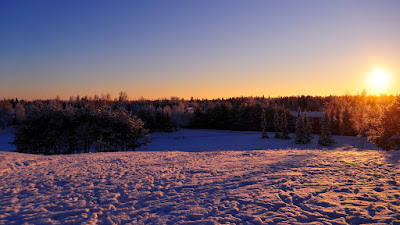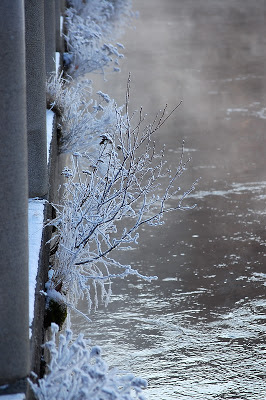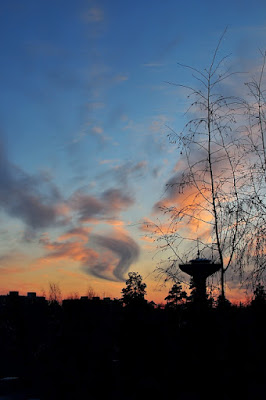Introduction
I'm back from that trip, and I have a pretty interesting article for you today. The title says it all, really: How to take the best photos in freezing temperatures. Perhaps some of you feel puzzled reading the "pros and cons" part. Having to take photos in very cold weather can't have any advantages, right? Wrong. It's true, that freezing temperatures pose several problems in regard to photography, but there are some pluses, too. Let's start from the problems. |
| Freezing temperatures involve problems, but also amazing opportunities |
The Things You Need to Know when Taking Photos in Freezing Temperatures
First of all, let's name the obvious: Winter can pose several problems unrelated to temperature itself. If you're in the middle of a blizzard, with 50 m/s winds, you have more important things to worry about than photography. Let's assume, therefore, that the weather is otherwise sunny and the wind is calm. What kind of issues does an air temperature of -28C/-20F present for a photographer?
1) Battery drain
This is a major issue. Your battery life will be much shorter when it's cold, so make sure to keep your camera stored inside the bag when not in used. If you're just walking around with it exposed, hanging around your shoulder, the battery will be at 0% when you most need it.
2) Operating the camera
This is a very practical but very real and direct problem. When the temperature is so low, you need gloves and thick ones. Rotating dials and pressing tiny buttons can be challenging. Personally, I always had an issue with Nikon's directional pad, especially in entry-level or older models. The situation is bit better nowadays (at least with the upper-level bodies).
Warning:
If you need to remove your gloves, don't leave your fingers exposed for more than a few seconds. This is very serious. Your fingers can go numb without warning, and then you will barely be able to even wear your gloves back. People have lost fingers to frostbite this way.
3) Landscape shots near flowing water
This of course can be used creatively, too. But you should be aware that when the air temperature is -28C/-20F, a water mass that isn't frozen (such as rapids, rivers near dams, etc.) will produce steam/haze - as the (flowing) water temperature remains around 30 degrees warmer! So, if you're planning to shoot scenes further away, if your line of sight passes over such water, be aware that you'll be facing haze.
 |
| When the air temperature is much colder than the water, expect haze |
4) Touchscreens are inoperable
If you're used to operating your camera using the touchscreen, be prepared to change your habits. You just can't remove your gloves more than a few seconds (see #2). There are some solutions, however.
5) Mechanical Jams
Although this doesn't happen often, extreme freezing temperature can put a strain on any mechanical device. I've had autofocus motors becoming sluggish, and I've also had aperture blades getting stuck. The problem is more likely to happen with low-quality, consumer plastic lenses.
6) Temperature Differences and Condensation
If you've gone from an air-conditioned office or house out to the streets during a hot summer day, you might have encountered this. Well, with freezing temperature the problem is reversed (and much more pronounced): when you go back inside, where the temperature is a good 50 degrees warmer, condensation will begin to form on your equipment. You should try to avoid this, by leaving your camera inside its bag for a couple of hours, so that there is time for the temperature to increase gradually.
The Benefits
Amazingly enough, freezing temperatures can actually be helpful in certain ways.1) Super-crisp, clear atmosphere for many miles
With the exception of #3 mentioned further above, temperatures less than -20 are often accompanied by haze-free atmosphere, with lovely intense blue skies. The contrast between a frozen white land and a perfect blue sky can be stunning
2) Sunsets are stunning
For the same reason, sunset colors can be absolutely gorgeous. All colors are more vivid, and the sunlight diffusing over greater distances can produce some rare-to-see tints.
 |
| When the temperature is deeply into the freezing zone, sunsets can produce some spectacular colors |
3) Amp noise not an issue
Well, maybe not exactly absent, but digital processors love cold. If you're into minutes-long astrophotography, there will be significantly less amp noise in freezing temperatures than during a hot summer night. Paired with the fact that the atmosphere is super-clear (see #1 just above), and although being outside for long during a -20 night isn't as attractive as a hot cup of coffee next to the fireplace, it can give you some stunning photos of the astral realm.

No comments:
Post a Comment